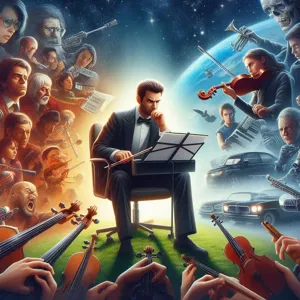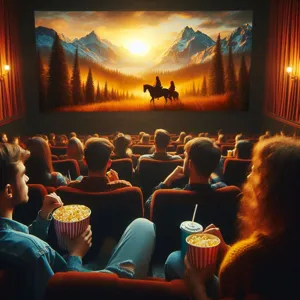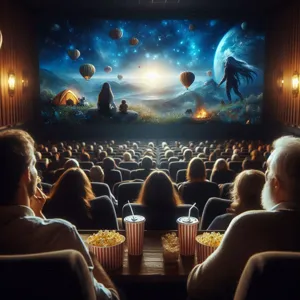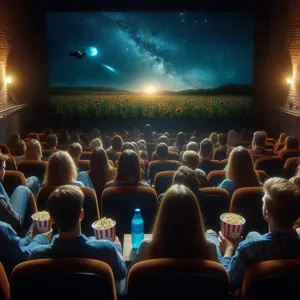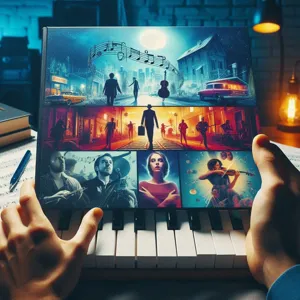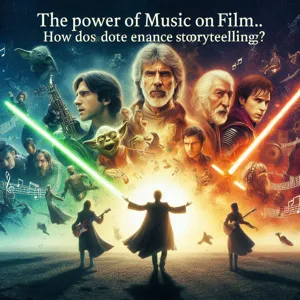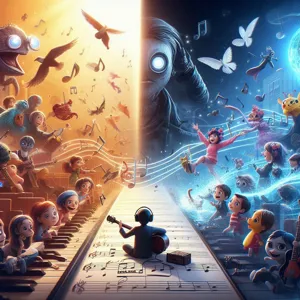Golf is not just a game of skill; it’s a mental and physical challenge that demands precision, strategy, and a deep understanding of the course.
Whether you’re a seasoned player looking to shave a few strokes off your score or a beginner eager to make your mark on the green, mastering your game requires a blend of technique and strategy. In this blog post, we will explore the top strategies that can help you lower your golf score and elevate your performance on the course. From perfecting your swing and refining your short game to developing a solid course management plan, these essential tips will empower you to approach each round with confidence and purpose. Get ready to transform your game and enjoy the satisfaction of seeing your hard work reflected in your scorecard!
1. Understanding Your Current Game: Self-Assessment

Before you can improve your golf game, it’s essential to take a step back and conduct a thorough self-assessment of your current skills. Understanding where you stand is the foundation upon which you can build your strategies for improvement. Begin by analyzing your strengths and weaknesses on the course—this involves more than just reflecting on your swing or putting skills; it’s about taking a holistic view of your game.
Start with a round of golf where you meticulously track your performance. Keep a scorecard that not only records your strokes but also notes specific areas of struggle—perhaps you consistently miss fairways, struggle with your short game, or find yourself three-putting more often than you’d like. By quantifying these elements, you can identify patterns that highlight where your game needs the most work.
Additionally, consider using technology to aid in your self-assessment. Apps and devices that track your shots or analyze your swing can provide valuable insights that you might overlook during casual play. Many of these tools can break down your performance in real time, giving you data on things like club distances, accuracy, and even swing mechanics.
Don’t forget to solicit feedback from trusted playing partners or instructors. An outside perspective can often reveal blind spots in your game that you might not recognize yourself. Be open to constructive criticism; after all, understanding your current game is a critical step toward lowering your score.
Once you have a clear picture of your golfing abilities, set specific, measurable goals. Maybe it’s aiming to reduce your handicap by a certain number of strokes or improving your putting accuracy. Whatever your targets, having a clear understanding of where you stand will guide your practice sessions and keep you motivated as you work toward mastering your game.
2. Setting Realistic Goals for Improvement
When it comes to lowering your golf score, setting realistic goals for improvement is a crucial step that often gets overlooked. Many players, fueled by enthusiasm and the desire to excel, set lofty targets that can lead to frustration and disappointment. Instead, take a moment to assess your current skill level and establish achievable milestones that will guide your journey to becoming a better golfer.
Start by breaking down your overall goals into smaller, manageable objectives. For instance, if you’re currently averaging a score of 100, aim to reduce it by just a few strokes over a specific time frame. A target of 95 in the next month is far more attainable than jumping straight to an impressive 85. Celebrate these incremental successes, as they will keep you motivated and encourage a sense of accomplishment along the way.
Consider focusing on specific aspects of your game, such as improving your putting, enhancing your driving distance, or mastering your short game. Each of these facets can be further broken down; for example, if you want to improve your putting, set a goal to reduce the number of three-putts per round or to master a particular putting drill. By zeroing in on specific areas, you will not only see tangible progress but will also gain a deeper understanding of your strengths and weaknesses.
Additionally, it’s essential to remain flexible and adjust your goals as needed. Golf is a game of consistency, and sometimes external factors such as weather, course conditions, or even personal circumstances can impact your performance. Don’t be discouraged if your progress doesn’t follow a linear path; instead, use these moments to reassess and recalibrate your goals. Remember, the journey to lowering your score is a marathon, not a sprint, and patience will be your greatest ally.
In summary, setting realistic goals for improvement involves honesty about your current abilities, breaking down larger aspirations into smaller, achievable targets, and maintaining the flexibility to adapt as needed. With a clear roadmap in place, you’ll not only see your scores drop but also enjoy the process of becoming a more skilled and confident golfer.
3. The Importance of a Proper Warm-Up Routine

A proper warm-up routine is crucial for anyone looking to improve their golf game and lower their score. Just like any athlete, golfers must prepare their bodies for the physical demands of the course. Skipping a warm-up can lead to stiff muscles, reduced flexibility, and an increased risk of injury—all of which can negatively impact your performance.
Start your warm-up with dynamic stretches that target the key muscle groups used in golf, such as your shoulders, back, and hips. Simple exercises like arm circles, torso twists, and leg swings can help loosen up tight areas and get your blood flowing. Consider incorporating some light cardio, like brisk walking or jogging for a few minutes, to elevate your heart rate and energize your body.
Next, it’s time to focus on your swing. Begin with shorter clubs, such as a wedge or a 9-iron, to gradually ease into your full-swing mechanics. Take a series of easy swings, concentrating on your form and technique rather than power. This will help you establish a rhythm and groove before moving on to your driver or longer clubs. Spend a few minutes practicing your putting and chipping as well; these skills are just as important as your long game and can greatly affect your overall score.
By dedicating time to a thorough warm-up routine, you not only prepare your body physically but also mentally. It’s an opportunity to visualize your game plan for the day and set a positive mindset as you step onto the first tee. Remember, the best rounds often start with a thoughtful and deliberate warm-up, setting the stage for a successful day on the course.
4. Perfecting Your Grip and Stance
Perfecting your grip and stance is foundational to lowering your golf score, yet it’s often overlooked by many players eager to improve their game. A proper grip ensures that you maintain control over your club throughout your swing, while a balanced stance sets the stage for consistent shots.
Start with your grip: it’s the only contact you have with the club, so it’s vital to get it right. Experiment with different types of grips—such as the interlocking grip, overlapping grip, and the ten-finger grip—to see which feels most comfortable and allows for the best control. Your fingers should wrap around the club with enough pressure to maintain control, but not so tight that tension creeps into your swing. When gripping the club, ensure that your hands are aligned properly; the ‘V’ formed between your thumb and index finger should point towards your trailing shoulder. This alignment promotes a straight and powerful swing.
Next, focus on your stance. A solid stance begins with the positioning of your feet; they should be shoulder-width apart for stability. Your knees should be slightly flexed, and your weight should be evenly distributed between your feet. The ball’s position in your stance can vary depending on the club you’re using: for longer clubs like drivers, the ball should be positioned more forward, while for shorter irons, it should sit more centrally. Pay attention to your posture—your back should be straight, and you should bend slightly at the hips, allowing for a relaxed yet athletic stance.
Incorporating drills to reinforce your grip and stance can lead to remarkable improvements. Spend time practicing in front of a mirror or recording yourself to ensure you maintain proper form. By committing to perfecting these fundamentals, you’ll create a strong foundation that can significantly lower your golf score and enhance your overall performance on the course. Remember, even the best golfers attribute their success to the basics—so invest the time to master your grip and stance, and watch your game flourish.
5. Enhancing Your Swing Technique

Enhancing your swing technique is one of the most impactful ways to lower your golf score and elevate your overall game. Your swing is the cornerstone of your performance on the course, impacting everything from distance to accuracy. To begin refining your swing, focus on the fundamentals. Start with your grip—ensure that it is neither too tight nor too loose, allowing for fluid motion while maintaining control.
Next, position yourself correctly at the ball. Your stance should be shoulder-width apart, with your weight evenly distributed between your feet. This balanced foundation will enable a more powerful and controlled swing. As you prepare to take your shot, visualize the path of your swing, aiming for a smooth, natural arc. Practicing your tempo is essential; a consistent rhythm will lead to better timing and more predictable results.
Don’t overlook the importance of flexibility and strength in your swing. Incorporate stretching and strength-training exercises into your routine to improve your range of motion and power. Simple exercises targeting your core and lower body can significantly enhance your swing mechanics, leading to longer drives and more accurate approach shots.
Finally, consider recording your swing or seeking feedback from a coach. Sometimes, the smallest adjustments—a slight change in your shoulder alignment or follow-through—can make a world of difference. Remember, mastering your swing is a journey, not a destination. Dedicate time to practice, stay patient, and watch as your scores start to drop while your enjoyment of the game skyrockets.
6. The Role of Short Game in Lowering Your Score
When it comes to lowering your golf score, the short game holds a pivotal role that many players often underestimate. This segment of the game encompasses all shots played within approximately 100 yards of the green, including chipping, pitching, and putting. While driving the ball long and straight off the tee may grab the spotlight, it’s the finesse and precision of your short game that can significantly shave strokes off your scorecard.
Imagine standing just off the green, with the flagstick waving gently in the breeze. This is where your short game skills come into play. A well-executed chip shot can lead to an easy tap-in, while a poorly struck one can leave you facing a daunting putt or, worse, a challenging recovery. Developing a reliable short game allows you to navigate these situations with confidence.
One essential aspect of mastering your short game is practice. Incorporating drills that focus on various lies, distances, and angles can enhance your feel for the club and the green. For instance, spend time on the practice green honing your chipping technique, experimenting with different clubs, and learning how to read the contours of the green. This not only builds muscle memory but also helps you become more comfortable with various shot types.
Another critical component is understanding the importance of the ‘up and down’—the ability to get the ball in the hole in two strokes from around the green. Aim to improve your chipping and pitching accuracy, knowing that a consistent short game can often save you from the pitfalls of a poor drive or approach shot.
Finally, don’t underestimate the power of putting. Often, players focus on their long game and neglect the most crucial aspect of all: getting the ball into the hole. Spend time learning the nuances of distance control and reading greens. Consider using alignment aids and practicing with various putting grips to find what feels most natural for you.
In summary, while the long game is undeniably important, it’s the short game that ultimately determines your score. By dedicating time to improving your chipping, pitching, and putting skills, you’ll not only lower your score but also enjoy the game more fully as you watch your efforts translate into tangible results on the course. Embrace the art of the short game, and watch your scores drop as your confidence rises.
7. Mastering the Art of Putting

Mastering the art of putting is often the difference between a good round and a great round. While many golfers focus their practice on driving and iron play, it’s the subtle nuances of the green that can truly elevate your game. Putting is where the magic happens, and honing this skill can lead to significant drops in your overall score.
First and foremost, developing a consistent putting routine is essential. This means establishing a pre-putt ritual that helps to calm your nerves and focus your mind. Whether it’s aligning your ball, taking a deep breath, or visualizing the ball rolling into the hole, a solid routine will set the stage for success.
Next, understanding the mechanics of your putt is crucial. Take the time to experiment with different grips and stances until you find what feels most comfortable and effective for you. The right grip can significantly affect your control and accuracy, while a stable stance can provide the foundation needed for a smooth stroke.
Additionally, mastering distance control can transform your putting game. Spend time on the practice green learning to gauge different lengths of putts, focusing on how hard to hit the ball for varying distances. A great drill is to practice lag putting—hitting the ball so it stops near the hole, rather than going for the aggressive sink. This will not only help you avoid three-putting but also build confidence as you face longer putts during your rounds.
Finally, don’t underestimate the power of reading the green. Observing the slope, grain, and texture of the grass can provide insights into how your ball will behave once it leaves your putter. Take your time to walk around the hole and see how the terrain might affect your shot, and don’t be afraid to ask fellow golfers for their insights—sometimes a fresh perspective can make all the difference.
By dedicating time to mastering the art of putting, you’re not just working on one aspect of your game; you’re investing in a powerful tool that can lead to lower scores and a more enjoyable experience on the course. After all, it’s often said that to be a great golfer, you must first be a great putter. So grab your putter, head to the green, and start refining your skills!
8. Course Management: Playing Smart
Course management is a crucial yet often overlooked aspect of the game that can significantly contribute to lowering your golf score. It’s not just about how far you can hit the ball; it’s about making strategic decisions that align your strengths with the challenges of the course.
Before you even step onto the first tee, take some time to familiarize yourself with the layout of the course. Understand the location of hazards, the contours of the greens, and the safest routes to the holes. Many golfers fall into the trap of playing aggressively, aiming directly for the flag regardless of the obstacles in their path. Instead, consider the safest approach to each shot. For instance, if a water hazard lurks near the pin, it might be wiser to aim for the center of the green, which provides a larger target and reduces the risk of a costly penalty.
Another key element of smart course management is assessing your own capabilities realistically. A long par 4 might tempt you to bust out the driver and go for broke, but if you consistently struggle with distance, it may be more beneficial to hit a hybrid or fairway wood off the tee, allowing for a more manageable approach shot. This patient, disciplined mindset often leads to shorter putts and fewer mistakes.
Additionally, consider the impact of the weather and course conditions. Wind can dramatically alter how you approach a hole, so adjusting your strategy based on these factors is essential. For example, into a headwind, you might need to select a club that one or two more than usual to ensure you reach the green.
By prioritizing thoughtful course management and playing smart rather than aggressively, you can navigate each hole with confidence, ultimately leading to lower scores and a more enjoyable round of golf. Remember, in golf, it’s not just about the shots you make; it’s about how well you manage the game.
9. Mental Strategies for Staying Focused
Mastering your mental game is just as crucial as perfecting your swing when it comes to lowering your golf score. Golf is as much a test of mental endurance and focus as it is of physical skill. To truly excel on the course, you need to cultivate a mindset that keeps you calm, collected, and ready to tackle each shot with precision.
One effective strategy is visualization. Before you step up to the tee, take a moment to close your eyes and visualize the entire shot. Picture the trajectory of the ball, its landing spot, and how it will roll onto the green. This mental rehearsal can help you feel more confident and in control, reducing anxiety and enhancing performance.
Additionally, practice mindfulness techniques to stay present during your game. The ebb and flow of a round can lead to distractions—whether it’s the pressure of an audience, a bad shot from the previous hole, or simply the noise of the course. Incorporating deep breathing exercises can help center your focus. Take a few deep breaths before every shot to ground yourself, clear your mind, and connect with the moment.
Setting personal goals for each round can also keep your mind engaged and motivated. Rather than fixating on your overall score, focus on smaller, achievable objectives, like hitting a certain number of fairways or improving your putting accuracy. These mini-goals can provide a sense of accomplishment and steer your concentration away from the scorecard, allowing you to play with greater freedom and less pressure.
Finally, remember the power of positive self-talk. Replace negative thoughts with affirmations that build your confidence. Instead of worrying about what could go wrong, remind yourself of your strengths and past successes. A positive mindset can create a feedback loop of improvement, where each successful shot reinforces your confidence for the next.
By implementing these mental strategies, you’ll not only enhance your focus but also enrich your overall golfing experience. As you learn to manage your mind on the course, you’ll find that lowering your score becomes a natural byproduct of a well-prepared mental game.
10. Utilizing Technology: Apps and Devices to Track Progress
In the modern era of golf, leveraging technology can be a game-changer for players looking to lower their scores and enhance their overall experience on the course. With a plethora of apps and devices available, golfers can now track their progress with precision, gain insights into their performance, and make data-driven decisions that lead to tangible improvements.
Golf GPS devices and smartwatches provide real-time information about distances to the green, hazards, and even shot analytics. These tools help players make better club selections and strategize their approach to each hole. Imagine being able to see the layout of the course right from your wrist, allowing you to plan your shots with confidence and accuracy.
On the app front, there are numerous options designed specifically for golfers. Applications like Golfshot and Arccos offer comprehensive statistics on your game, recording everything from driving accuracy to putting performance. By reviewing these metrics, you can identify patterns in your play, pinpoint weaknesses, and focus your practice sessions more effectively. Most of these apps even allow you to connect with friends, fostering a sense of community and competition that can motivate you to improve.
Moreover, advanced technologies like swing analyzers and launch monitors provide invaluable feedback on your swing mechanics. These devices measure crucial parameters such as club speed, angle of attack, and ball spin, giving you insights that can lead to significant adjustments in your technique. With this data at your fingertips, you can work with a coach or use instructional videos to refine your swing and enhance your skills.
Incorporating these technological tools into your golf routine not only makes practice more engaging but also helps you stay accountable. Tracking your progress over time creates a visual representation of your development, celebrating milestones and pushing you to strive for new goals. By harnessing the power of technology, you’ll not only gain a deeper understanding of your game but also find yourself on a clear path toward mastering your skills and lowering your golf score.
11. The Value of Practice: Building a Consistent Routine
When it comes to lowering your golf score, few things are as crucial as the dedication to a consistent practice routine. Just like any other skill, golf demands time and effort to master, and establishing a structured approach to practice can significantly enhance your performance on the course.
Begin by setting aside specific times each week dedicated solely to practice. Consistency is key; even short, focused sessions can be more beneficial than infrequent, lengthy practices. Aim for a balanced routine that incorporates all aspects of the game: driving, putting, chipping, and iron play. By systematically addressing each area, you ensure that no part of your game falls by the wayside.
Incorporate drills that mimic real-game situations. For instance, practice your putting from various distances and angles to simulate the pressure of an actual round. Develop your short game by chipping from different lies and conditions, as this will help you gain confidence when navigating tricky situations on the course.
Moreover, consider keeping a practice journal to track your progress and identify areas for improvement. Documenting your practice sessions not only helps you stay accountable but also allows you to reflect on your growth over time. It can be motivating to look back and see just how far you’ve come.
Additionally, include fitness and flexibility exercises in your routine, as physical conditioning can greatly impact your golf game. A strong core and flexible muscles can lead to improved swing mechanics, greater distance, and reduced risk of injury.
Ultimately, embracing the value of practice and committing to a consistent routine will lead to steady improvement. As your skills sharpen and your confidence grows, you’ll find that your scores begin to drop, making every trip to the course an exciting opportunity to showcase your progress. Remember, mastery takes time, but with dedication and a well-structured practice plan, you’ll be well on your way to mastering your game.
12. Learning from the Pros: Tips from Top Golfers
When it comes to mastering your golf game, there’s no better resource than the professionals who play at the highest level. Learning from top golfers can provide invaluable insights that could transform your approach on the course. Here are some essential tips gleaned from the expertise of the pros that can help you lower your score.
Firstly, many professional golfers emphasize the importance of a solid pre-shot routine. This ritual not only helps you stay focused and calm but also allows you to visualize your shot before you make it. Spend time developing your own routine—whether it involves a specific number of practice swings or a mental checklist to clear your mind. Consistency in your approach can lead to more confident swings.
Another key takeaway from the pros is the significance of course management. Top golfers are masters at strategizing their play, choosing when to take risks and when to play it safe. They analyze the course layout, considering factors like wind direction and pin placement to make informed decisions. Before your next round, take the time to study the course and develop a strategy tailored to your strengths and weaknesses.
Additionally, many elite players advocate for focusing on short game skills—putting and chipping. It’s often said that “drive for show, putt for dough,” and for good reason. Investing time in your short game can yield quick improvements in your overall score. Practicing various lies and distances around the green will enable you to get up and down more consistently, saving those precious strokes.
Lastly, don’t underestimate the power of mental resilience. The best golfers possess incredible mental fortitude, allowing them to stay composed under pressure. Incorporating techniques such as visualization, positive affirmations, and breathing exercises can help you cultivate a strong mental game. Remember, golf is as much a mental sport as it is physical; mastering your mindset can be the key to unlocking your potential.
By absorbing the lessons and strategies from top golfers, you can elevate your game and bring your scores down. Whether it’s refining your routine, managing the course more wisely, honing your short game, or strengthening your mental approach, these pro tips can help you navigate the course with greater confidence and skill. Now, it’s time to hit the greens and put these insights into practice!
13. Common Mistakes to Avoid on the Course
As you embark on your journey to lower your golf score, it’s crucial to be aware of the common pitfalls that can derail your progress. Understanding these mistakes can not only save you strokes but also enhance your overall enjoyment of the game.
One prevalent mistake is failing to properly assess the course conditions before your round. Whether it’s windy weather, wet greens, or a fast-paced fairway, neglecting to adapt your strategy to these variables can lead to poor shot selection and unnecessary frustration. Always take a moment to observe how the elements might impact your game, and adjust your approach accordingly.
Another common error is neglecting the importance of a pre-shot routine. Rushing through your shots without a consistent process can lead to mental lapses and diminished focus. Establishing a reliable pre-shot routine, whether it’s visualizing your shot, taking practice swings, or aligning your stance, can help instill confidence and consistency in your game.
Additionally, many golfers underestimate the power of short game practice. Focusing solely on long drives can leave your short game lacking, resulting in wasted opportunities around the greens. Prioritize chipping and putting drills to refine your touch and control, as these are often the areas where scores can be significantly improved.
Lastly, keep an eye on your course management skills. Many golfers fall into the trap of always going for the pin, even when it’s not the wisest decision. Learning to play smart and manage risks—such as laying up on a challenging hole—can save you from making costly mistakes and help maintain your momentum throughout the round.
By being mindful of these common mistakes, you can cultivate a more strategic approach to your game, allowing you to focus on what truly matters: lowering your score and enjoying the beautiful game of golf.
14. Staying Physically Fit for Better Performance
Staying physically fit plays a crucial role in enhancing your golf performance and ultimately lowering your score. While golf may not seem as physically demanding as other sports, the reality is that it requires a unique combination of strength, flexibility, and endurance. A robust fitness routine tailored to the demands of golf can translate into better swing mechanics, increased distance, and improved overall consistency on the course.
Engaging in a regular exercise regimen focused on core strength is vital, as a strong core stabilizes your body during the swing and helps generate power. Incorporating exercises like planks, Russian twists, and medicine ball rotations can significantly enhance your core stability. Additionally, flexibility is key to achieving a full, fluid swing. Consider integrating yoga or dynamic stretching into your routine to improve your range of motion and prevent injuries.
Cardiovascular fitness should not be overlooked either. Walking the course requires stamina, and maintaining a good level of cardiovascular health will keep you energized throughout your round. Activities such as jogging, cycling, or swimming can boost your endurance, allowing you to maintain focus and clarity during those crucial final holes.
Moreover, a balanced diet plays an equally essential role in your physical fitness. Fueling your body with the right nutrients not only supports your fitness goals but also enhances your mental sharpness and concentration on the course. Foods rich in antioxidants, proteins, and healthy fats can provide sustained energy levels, helping you stay alert and ready to perform.
By prioritizing your physical fitness, you’ll not only improve your game but also cultivate a deeper enjoyment of golf. The increased confidence and capability that come from being fit will allow you to tackle challenges on the course with a positive mindset, ultimately leading to lower scores and a more fulfilling golf experience.
15. Reflecting on Progress: Adjusting Strategies Over Time
Reflecting on progress is essential for any golfer looking to lower their score and enhance their overall game. It’s not enough to simply practice and play; you must take the time to evaluate what’s working and what isn’t. After each round, carve out a moment to reflect on your performance. What aspects of your game felt strong? Perhaps your drives were consistently long and straight, or maybe your short game was particularly sharp. Conversely, consider the parts that fell short—were you struggling with your putting, or did you find yourself in trouble with your approach shots?
Keeping a detailed golf journal can be incredibly beneficial in this regard. Document not just your scores, but also the conditions of the course, your mental state, and your strategies for different holes. This will help you identify patterns over time and adjust your strategies accordingly. For instance, if you notice that you often struggle with a specific type of shot under pressure, you can dedicate practice time to that area, incorporating drills that build confidence and skill.
Moreover, don’t hesitate to seek feedback from fellow golfers or a coach. A fresh set of eyes can often spot weaknesses you haven’t noticed. Reviewing video footage of your swing or your play can also provide insights you might miss in the heat of the moment.
As you reflect and adjust, remember that improvement is a journey, not a destination. Embrace the process, celebrate small victories, and be willing to adapt your strategies as you evolve. By consistently reflecting on your progress and making informed adjustments, you’ll find yourself not only lowering your golf score but also enjoying the game more than ever.
In conclusion, mastering your golf game is an ongoing journey that requires dedication, practice, and the right strategies. By implementing the top strategies outlined in this post—such as improving your short game, focusing on your mental approach, and fine-tuning your swing mechanics—you can take significant steps toward lowering your golf score. Remember, every golfer encounters challenges, but with persistence and a willingness to learn, you can turn those challenges into opportunities for growth. So, grab your clubs, head to the course, and put these tips into action. We can’t wait to hear about your progress and the new personal bests you achieve. Happy golfing!




